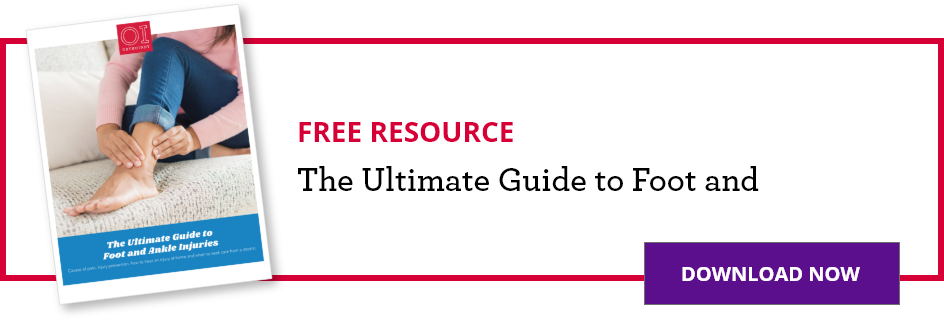THIS POST IS PART OF THE ULTIMATE GUIDE TO FOOT AND ANKLE INJURIES
A tarsal coalition is an atypical connection between bones in the foot, called tarsal bones. Tarsal bones are found in the back of the foot and heel and make up the hindfoot and midfoot. Tarsal coalition is caused by two bones growing into each other, which become connected by bars made of either bone, cartilage or tissue.
The tarsal bones most often involved are the calcaneus, navicular bones and talus. This kind of unusual connection between the bones can cause intense flatfoot.
Is tarsal coalition genetic?
Tarsal coalition is an inherited condition caused by a gene mutation. Typically, tarsal coalition begins before birth and is present at birth, but signs and symptoms usually don’t appear until adolescence. This is because babies have more cartilage that hasn’t turned into bone yet.
Is tarsal coalition rare?
Tarsal coalition is somewhat rare. It is estimated that one in 100 people are affected by tarsal coalition. In half of these cases, both feet are impacted. In many instances, symptoms are never detected. However, in other cases, symptoms do become noticeable.
Tarsal coalition symptoms
- Stiffness
- Pain
- Daily activities become challenging
- Limited motion
- Rigidity in the foot
- Flatfoot
Tarsal coalition can result in ankle sprains and arthritis.
Tarsal coalition treatment
Children typically respond well to simple treatments, including orthotics and physical therapy. If these treatments don’t work, that usually means the symptoms are more severe and may require surgery.
Medical treatment begins with an examination of the foot and ankle. In order to correctly determine the amount, degree and location of coalitions, X-rays are required. Computed tomography (CT) scans can give a clearer view of the bones with more detail. In rare cases, a magnetic resonance (MRI) scan may be used to provide a view that includes soft tissue in order to examine abnormal bars.
Nonsurgical treatment includes:
- Rest from high-impact activity for about three to six weeks.
- Orthotics, such as arch supports that keep the foot in place and lessen pain.
- Steroid injections to help relieve pain.
- A boot or cast to temporarily take strain off the tarsal bones.
If surgery is determined necessary, the most common procedure is resection of the coalition. Another surgery option is called a fusion, which is used to hold bones in place for more serious cases that involve deformity or arthritis.
How long does it take to recover from tarsal coalition surgery?
Recovery from surgery typically involves a cast, followed by a boot and then physical therapy. Surgery commonly results in pain relief and better mobility.
Length of recovery varies from patient to patient and is based on the type of treatment method used. Typically, recovery lasts from six to eight weeks.
Schedule an appointment
Your well-being is important to us. Click the button below or call us to schedule an appointment with one of our orthopedic specialists. If your injury or condition is recent, you can walk right into one of our OrthoIndy Urgent Care locations for immediate care. For rehabilitation and physical therapy, no referral is needed to see one of our physical therapists.






